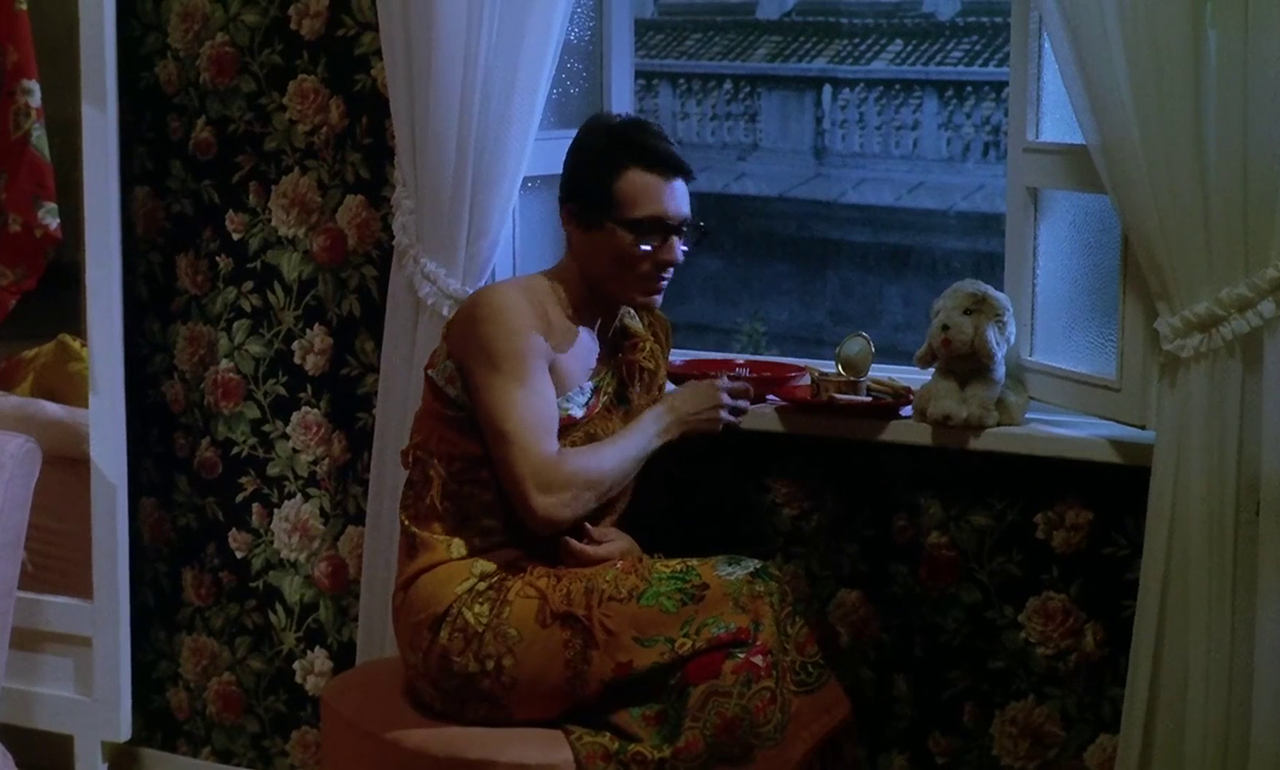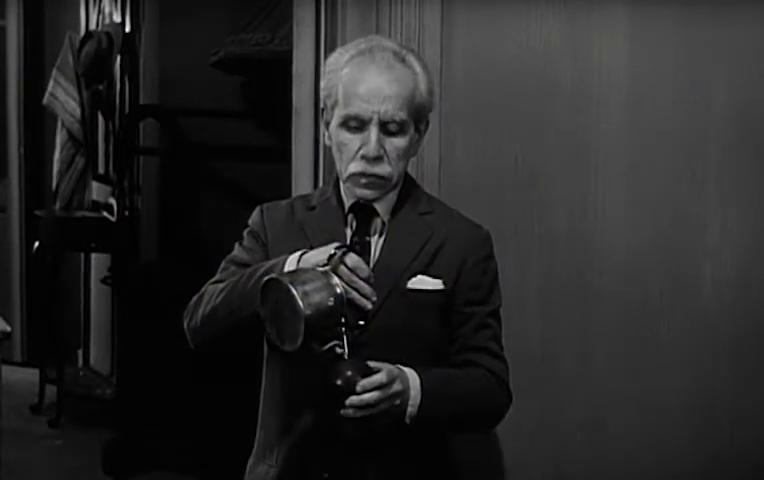“My son – Sebastian – and I constructed our days. Each day we would carve each day like a piece of sculpture, leaving behind us a trail of days like a gallery of sculpture until suddenly, last summer.”Suddenly, Last Summer (Joseph L. Mankiewicz, 1959)
Jun
7

Catherine (Elizabeth Taylor) and a man in white, seen from the back, eating alfresco near a beach. DP: Jack Hildyard.
– Mrs Vi Venable
mystery
“There's phrase that… 'A man is made of all men. He is equal to all and all are equal to him'.”Strategia del ragno The Spider's Stratagem] (Bernardo Bertolucci, 1970)
Apr
19
melon

Athos Magnani (Giulio Brogi) and Draifa (Alida Valli) sharing a meal. There's a carafe with water, a small vase with two flowers, wine glasses, and half a melon. Athos looks up, past us, towards something. DPs: Franco Di Giacomo & Vittorio Storaro.
– Athos Magnani
Devil Doll (Lindsay Shonteff, 1964)
Mar
15
sandwiches

A large knife amongst rather minuscule triangular tea sandwiches. A miniature wooden barrel holding toothpicks is right there for your sandwich stabbing convenience. DP: Gerald Gibbs.
“I look into the distance to the end of the world. Before the day is over, the end will come. First, time will tumble, and then the earth. The clouds will begin to race… the earth boils over; this is the sign. This is the beginning of the end. The world's edge begins to crumble… everything starts to collapse… tumbles, fall, crumbles and collapses. I look into the cataract. I feel an undertow, it draws me, it sucks me down. I began to fal, a vertigo seizes upon me.”Herz aus Glas [Heart of Glass] (Werner Herzog, 1976)
Mar
13
tea

A young maid (Sonja Skiba) holding a heavy tray with cups, plates, and various tea-related pottery. There's a somnambulist quality to her bearing. DP: Jörg Schmidt-Reitwein.
– Hias
火まつり [Himatsuri / Fire Festival] (Mitsuo Yanagimachi, 1985)
Feb
16
water

A man drinks from a small stream like an animal. DP: Masaki Tamura.
Les yeux cernés [Marked Eyes] (Robert Hossein, 1964)
Jan
11
baguette

A young woman with big eyes and a dark bob (Marie-France Pisier) picks crumbs out of a fresh baguette. She's somewhere in a dreary small town. The snow's almost gone. DP: Jean Boffety.
Pinky Rose: Wine! You got wine!
Millie: Yeah.
PR: Tickled Pink!
M: And the other's Lemon Satin.
PR: Ooo! Lemon Satin!3 Women (Robert Altman, 1977)
Dec
2
Pillsbury™ Crescent Dogs

Pinky Rose (Sissy Spacek) opens a jar of Sau-Sea shrimp cocktail. Thank you Mother Suspiria and mom for solving this riddle! Ooo, there's Crescent Dogs too! DP: Charles Rosher Jr..
L'udienza [The Audience] (Marco Ferreri, 1972)
Nov
14

Amedeo (Enzo Jannacci), a young man with heavy rimmed glasses wrapped in heavy, flowery drapes as if it's a toga, eating late at night. There's an opened can on one of his plates. A sad looking stuffed toy dog hangs out. DP: Mario Vulpiani.
The Animal (Walter Ungerer, 1976)
Sep
30
National Ghost Hunting Day

Jo (Jo Moore) in the couple's cabin. She's seen reflected in a mirror, together with what appears to be an older woman in an old photograph. DP: Walter Ungerer.
